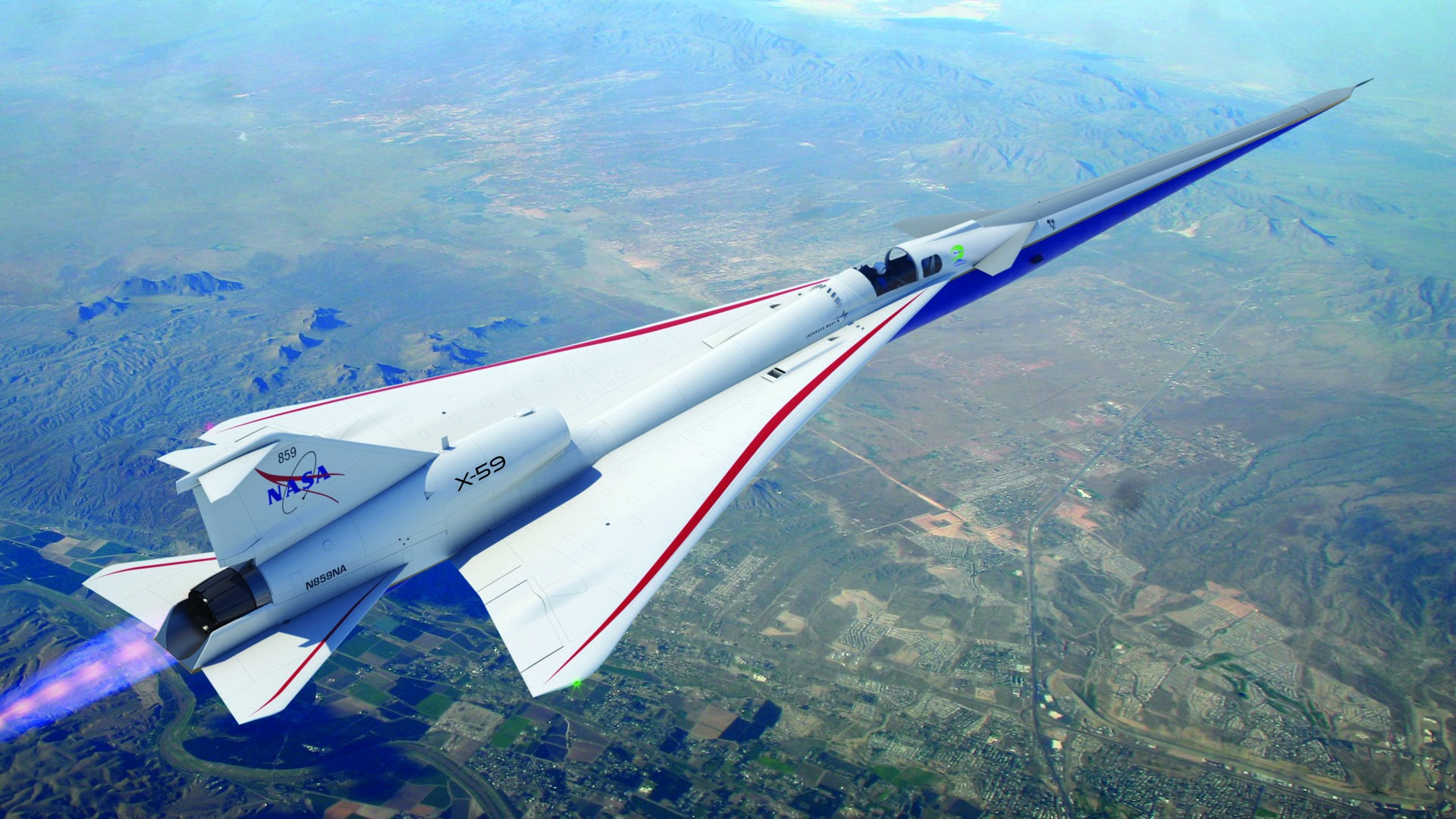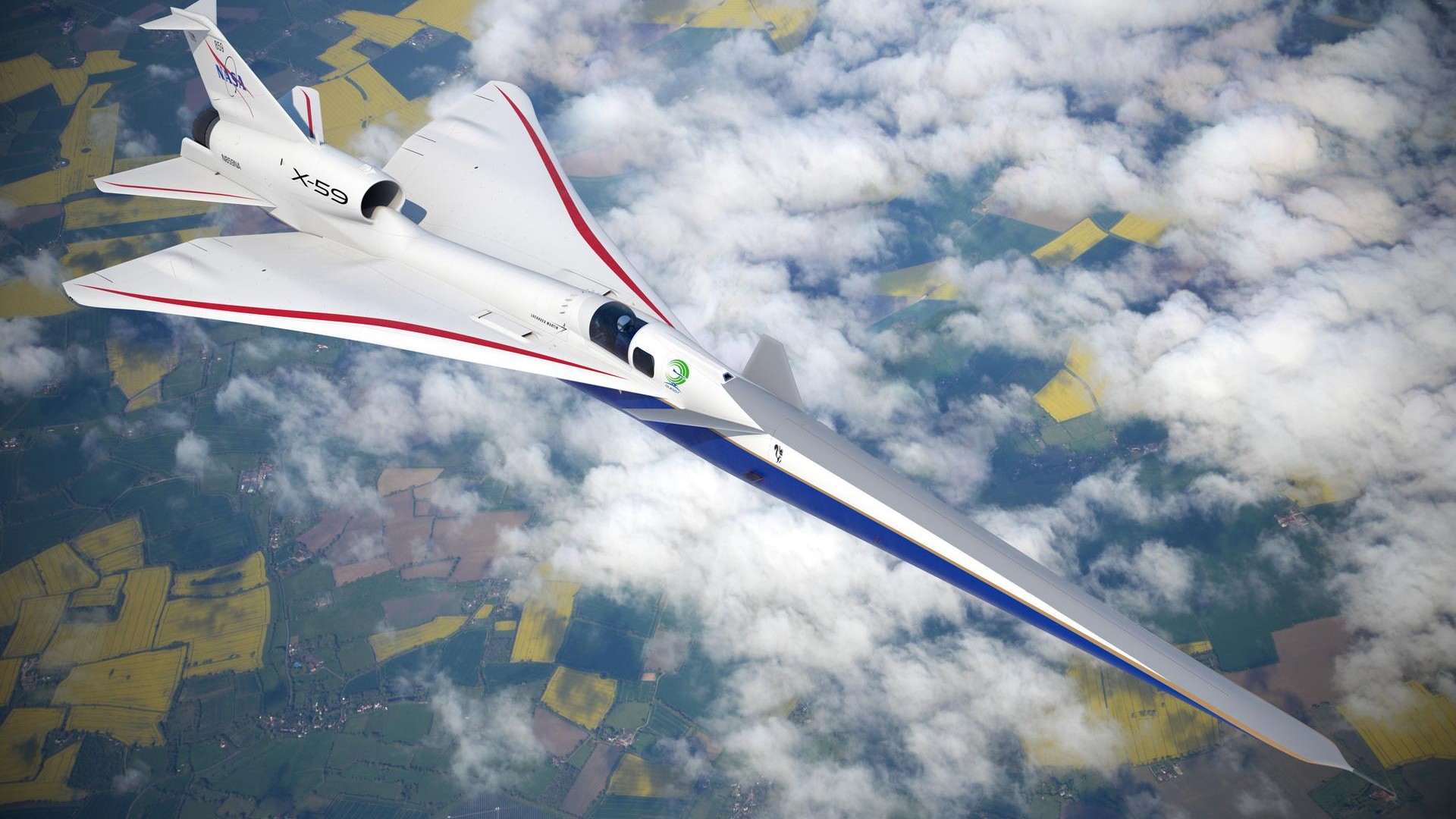
NASA's experimental supersonic jet is ready to rock a red, white and blue color scheme ahead of it's first flight in which it will quietly shatter the sound barrier over Earth.
The X-59 Quiet SuperSonic Technology (Quesst) jet moved to the paint barn at Lockheed Martin Skunk Works' facility in Palmdale, California, on Nov. 14, 2023. The jet's color scheme was changed from green to a white body with a sonic blue underside and red wing accents.
The patriotic new paint job is more than just aesthetic, however. The paint will help protect the X-59 from moisture and corrosion, and the design also features key safety markings that will assist with ground and flight operations. Once the paintwork is completed, the team behind the experimental jet will take final precise weight and shape measurements to improve the modeling of the X-59.
"We are incredibly excited to reach this step in the mission. When the X-59 emerges from the paint barn with fresh paint and livery, I expect the moment to take my breath away because I'll see our vision coming to life," Low Boom flight demonstrator project manager Cathy Bahm said in a statement. "The year ahead will be a big one for the X-59, and it will be thrilling for the outside of the aircraft to finally match the spectacular mission ahead."
Related: Watch NASA's sci-fi-looking X-59 'quiet' supersonic jet roll out of the hangar (video)
Breaking the sound barrier with a bump not a boom
The X-59 is designed to not only fly faster than sound, but also to make less noise when it breaks the sound barrier. Rather than creating a sonic boom when it hits Mach-1, the jet should create a sonic "thump" similar to the sound of a distant car door slamming.

The jet is being built by Lockheed Martin through its Skunk Works advanced aircraft manufacturing facility in Palmdale, California. Once it is completed, the X-59 will fly will rocket over communities in the U.S. that have yet to be selected, and its operators will then gather data from the population about the noise created by the jet.
The X-59 program, if successful, has the potential to reshape rules that currently prohibit the flight of supersonic jets over land.







